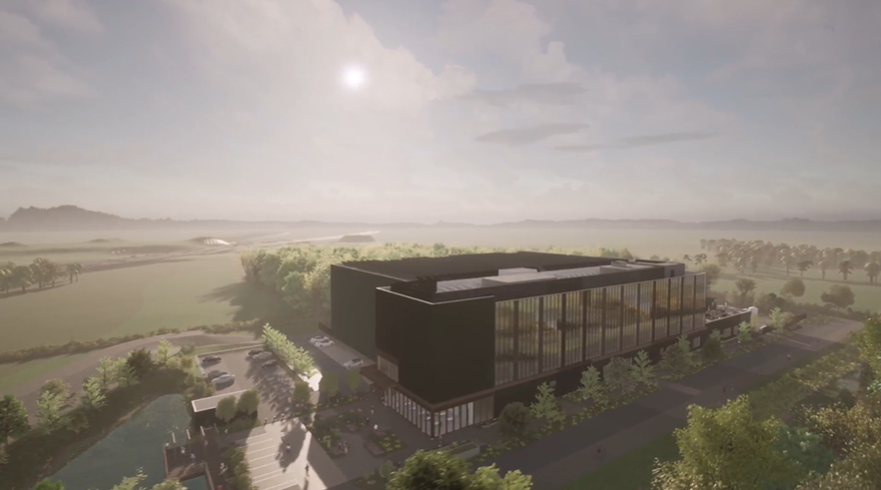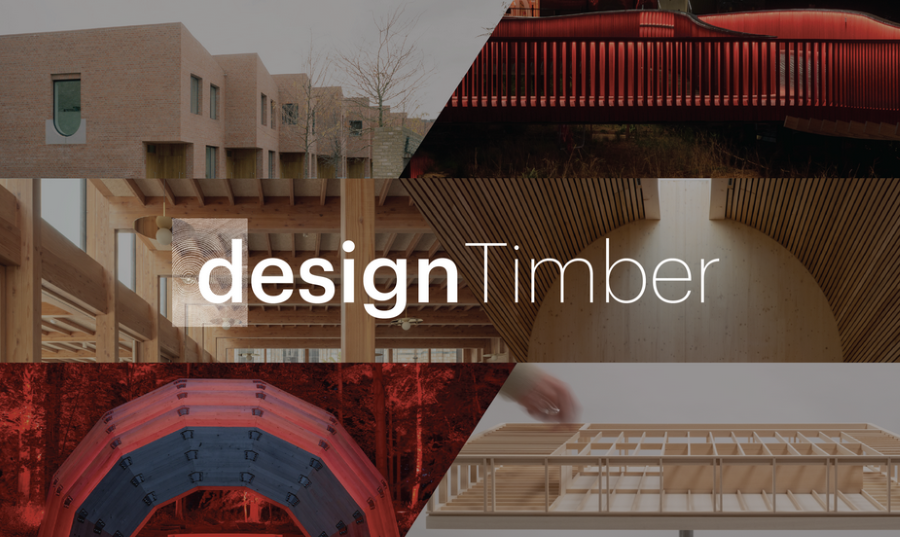The Natural History Museum (NHM) has secured planning permission from Wokingham Borough Council to build a new collections, research and digitisation centre at Thames Valley Science Park in Reading, subject to completion of a Section 106.
To mark the occasion, for the first time, the Museum has released CGI flythrough footage of what the facility is expected to look like.
Beginning with a bird’s eye view at the centre’s pondside entrance, this perspective places the site, nestled in woodland, into context from above. Viewers are then taken on a journey through the centre, starting with the reception lobby and multifunctional space where lectures and other events will be held.
The tour continues into the staff areas, including work areas, the spine to access collection spaces and a glimpse into the high-tech laboratories where Museum and visiting scientists will seek solutions to some of the biggest problems facing our planet.

CGI: Feilden Clegg Bradley Studios architects, courtesy of Natural History Museum
As a result of the Planning Committee’s positive decision, the Museum will begin to construct its new collections, science and digitisation centre in early 2025.
Situated in Shinfield at Thames Valley Science Park, the innovation campus of the University of Reading, the building is expected to be finished in 2027. By 2031, the centre will be operational, equipped with cutting-edge laboratories, workspace for Museum scientists and purpose-built storage for 28 million specimens – around a third of the Museum’s collection. Transporting these specimens to Shinfield will be the largest move of natural history specimens globally.
The project is generously enabled through a substantial £201m investment from the UK Government as part of its priority to increase investment in science, research and development.
Tim Littlewood, Executive Director of Science at the Museum, said: “We are thrilled that Wokingham Borough Council have granted planning permission for our new facility in Reading. This new site will enable us to secure irreplaceable collections in a purpose-built storage facility, provide new scientific infrastructure to accelerate research and digitisation, and act as a base for new collaborations and partnerships.”
The Museum’s new facility will improve collections access – physically and digitally – to the scientific community. Digitisation of the collection will be accelerated, with new techniques and technologies applied to collections-based research. Increased accessibility will enhance solutions-led research spanning: climate change, biodiversity loss, health and sustainable resourcing, ultimately strengthening the UK’s position in finding solutions to the planetary emergency.
Housed at the new centre in bespoke storage will be the Museum’s collections of mammals, non-insect invertebrates (such as corals, crustaceans, molluscs and worms), fossilised mammals and invertebrates, molecular collections and micropalaeontology. The facility will include an imaging and analysis centre, including digitisation suites; state-of-the-art molecular biology laboratories, including ancient DNA labs; cryo-facilities for tissue storage; conservation labs; and specimen preparation labs, including quarantine facilities. The centre's footprint will be the equivalent of three football pitches, totalling 25,000m2.
The Museum’s science is outward-facing, responsive and driven by collaboration. We are working in partnership with the University of Reading to drive forward scientific innovation and translate research into action against the planetary emergency. Our new facility will also bring benefits to the local community directly through engagement activities, which have the potential to connect the public with the research, develop skills and learn about the natural world.
As advocates for the planet, sustainability is integral to the Museum's operations. The centre at Thames Valley Science Park will be constructed with the lowest possible environmental impact, using responsibly sourced materials and services. The Museum is committed to achieving a net-zero carbon building in both construction and operation.
CGI Flythrough available here. For further information and updates on the Unlocked Programme: nhm.ac.uk/about-us/science-centre




















